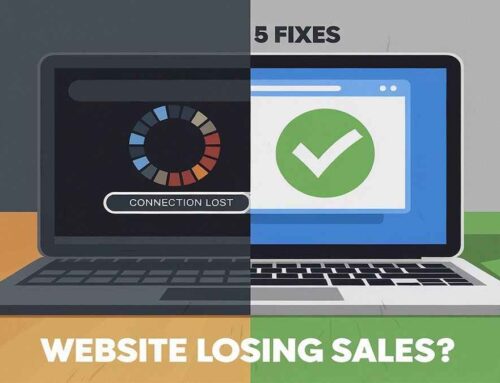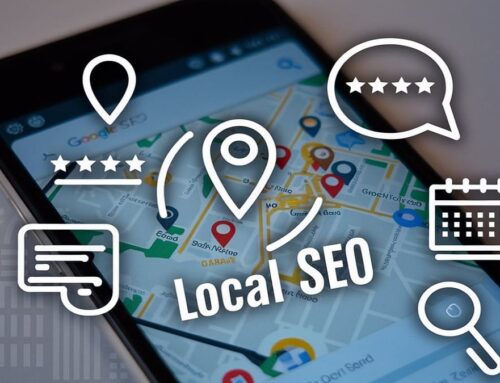
Building a Powerful Brand
In today’s crowded marketplace, building a powerful brand that stands out from the competition is more important than ever. With countless businesses vying for consumers’ attention, establishing a unique and memorable brand identity is essential for success.
This comprehensive guide will explore the key elements of building a powerful brand and provide actionable strategies for differentiating your business from the competition.
Understanding Brand Identity
Brand identity is the collection of all elements that a company creates to portray the right image to its consumers. This includes the brand name, logo, tone, tagline, typeface and more.
But it goes beyond visual and verbal elements; it also encompasses the overall personality and values of the brand. Your brand identity is what makes you instantly recognizable to your customers.
The Importance of a Strong Brand
A strong brand can significantly impact your business in several ways.
- Customer Loyalty: A well-defined brand fosters trust and loyalty among customers. When consumers identify with your brand values and recognize your brand consistently, they are more likely to return.
- Differentiation: In a saturated market, a strong brand helps you stand out from competitors. It gives customers a reason to choose your product or service over others.
- Premium Pricing: Brands with strong identities can often command higher prices. Customers are willing to pay a premium for brands they trust and perceive as high quality.
- Emotional Connection: Brands that connect emotionally with consumers create deeper, more meaningful relationships. This emotional bond can turn customers into advocates who promote your brand organically.
- Business Value: A powerful brand adds value to your business. It can attract better talent, foster partnerships and increase your company’s overall market value.
Key Elements of a Powerful Brand
To build a powerful brand, you need to focus on several core elements.
- Brand Vision and Mission: Your brand vision and mission define the purpose and direction of your business. They should articulate what your brand stands for, your core values and your long-term aspirations. A clear vision and mission help align your team and communicate your brand’s essence to your audience.
- Target Audience: Understanding your target audience is crucial for developing a brand that resonates. Research your audience’s demographics, psychographics, needs and pain points. This insight will help you create a brand that appeals to their emotions and desires.
- Brand Positioning: Brand positioning is about carving out a unique place in the market. It involves identifying what makes your brand different from competitors and highlighting those unique selling points (USPs). Effective positioning addresses a gap in the market and aligns with your target audience’s needs.
- Brand Personality: Your brand personality is the human characteristics attributed to your brand. It could be playful, professional, adventurous or sophisticated. This personality should be consistent across all brand touchpoints, from marketing materials to customer interactions.
- Visual Identity: Visual elements like your logo, color scheme, typography and imagery are crucial for brand recognition. These elements should be distinctive and reflective of your brand’s personality and values. Consistency in visual identity helps build a memorable brand.
- Brand Voice and Messaging: Your brand voice is the tone and style of your communication. It should be consistent across all platforms and touchpoints. Your messaging should clearly convey your brand’s value proposition, resonate with your target audience and differentiate you from competitors.
Strategies for Building a Powerful Brand
Building a powerful brand requires strategic planning and consistent execution. Here are some actionable strategies to help you stand out from the competition.
- Define Your Brand Purpose: Start with a clear understanding of why your brand exists. What problem does it solve? What value does it bring to customers? Your brand purpose should be the foundation of all your branding efforts.
- Research Your Competition: Analyze your competitors to identify their strengths and weaknesses. Look for gaps in the market that you can fill. Understanding your competition helps you position your brand uniquely and avoid their mistakes.
- Create a Strong Brand Story: A compelling brand story humanizes your brand and makes it relatable. It should communicate your brand’s history, mission and values in a way that resonates with your audience. A strong narrative can evoke emotions and create a lasting impression.
- Develop a Unique Visual Identity: Invest in professional design to create a distinctive visual identity. Your logo, color palette, typography and imagery should all align with your brand’s personality and values. Ensure consistency across all platforms to reinforce brand recognition.
- Craft a Consistent Brand Voice: Your brand voice should reflect your brand’s personality and be consistent in all communications. Whether it’s social media posts, website content or customer service interactions, a consistent voice helps build trust and familiarity.
- Leverage Content Marketing: Content marketing is a powerful tool for building brand awareness and establishing authority. Create valuable, relevant and consistent content that resonates with your audience. This could include blog posts, videos, infographics and social media updates.
- Engage with Your Audience: Building a powerful brand involves two-way communication. Engage with your audience on social media, respond to their comments and listen to their feedback. This interaction builds a community around your brand and fosters loyalty.
- Deliver Exceptional Customer Experiences: Your brand is not just what you say it is; it’s also what your customers say it is. Delivering exceptional customer experiences consistently helps build a positive reputation. Train your team to embody your brand values in every interaction.
- Monitor and Adapt: Branding is an ongoing process. Regularly monitor your brand’s performance and adapt your strategies as needed. Stay updated with market trends and customer preferences to ensure your brand remains relevant.
Case Studies of Powerful Brands
To illustrate the principles of building a powerful brand, let’s look at some case studies of successful brands that have stood out from the competition.
Apple
Apple is a prime example of a brand that has built a powerful identity. Its brand vision is to create the best products on earth and to leave the world better than they found it. Apple’s brand positioning focuses on innovation, premium quality and user-friendly design. The brand’s visual identity, characterized by the iconic apple logo and minimalist design, is instantly recognizable.
Apple’s brand voice is consistent, emphasizing simplicity, innovation and sophistication. The company engages its audience through compelling product launches, storytelling and exceptional customer service.
Nike
Nike’s brand is built around the vision of bringing inspiration and innovation to every athlete in the world. The brand’s powerful slogan, “Just Do It,” encapsulates its mission and inspires millions of people to push their limits. Nike’s brand positioning emphasizes high-performance, innovation and athleticism. The brand’s visual identity, with its iconic swoosh logo and bold typography, is easily recognizable.
Nike’s brand voice is motivational, energetic and empowering. The company leverages content marketing and social media to engage with its audience and build a community of loyal fans.
Tesla
Tesla has established itself as a leader in the electric vehicle market through its strong brand identity. The brand’s vision is to accelerate the world’s transition to sustainable energy. Tesla’s brand positioning focuses on innovation, sustainability and cutting-edge technology. The brand’s visual identity is sleek and modern, reflecting its commitment to advanced design and engineering.
Tesla’s brand voice is forward-thinking, confident and visionary. The company engages its audience through innovative product unveilings, educational content and a strong online presence.
Common Branding Mistakes to Avoid
While building a powerful brand, it’s essential to avoid common pitfalls that can undermine your efforts.
- Inconsistency: Inconsistent branding confuses customers and weakens your brand identity. Ensure that your visual identity, brand voice and messaging are consistent across all touchpoints.
- Ignoring Your Audience: Failing to understand and engage with your target audience can lead to ineffective branding. Regularly conduct market research and gather feedback to ensure your brand remains relevant.
- Lack of Differentiation: Without a clear differentiation strategy, your brand may blend in with competitors. Highlight your unique selling points and position your brand distinctively in the market.
- Neglecting the Customer Experience: Your brand is shaped by the experiences customers have with your business. Ensure that every touchpoint, from initial contact to post-purchase support, reflects your brand values.
- Overpromising and Underdelivering: Making promises you can’t keep damages your brand’s credibility. Be realistic in your messaging and consistently deliver on your promises.
The Future of Branding
The branding landscape is continuously evolving, influenced by technological advancements, changing consumer behaviors and market dynamics. Here are some trends shaping the future of branding.
- Personalization: Consumers increasingly expect personalized experiences. Brands that leverage data to deliver tailored content, products and services will stand out.
- Authenticity: Authenticity is becoming a key driver of brand loyalty. Consumers are drawn to brands that are transparent, genuine and socially responsible.
- Digital Presence: A strong digital presence is essential for modern brands. Investing in digital marketing, social media engagement and e-commerce capabilities is crucial for reaching and engaging with your audience.
- Sustainability: Sustainability is no longer a niche concern; it’s a mainstream expectation. Brands that prioritize environmental and social responsibility will resonate with conscious consumers.
- Experiential Marketing: Creating memorable brand experiences can leave a lasting impression. Experiential marketing, whether through events, pop-ups or interactive content, helps build emotional connections with consumers.
- Technology Integration: Emerging technologies like artificial intelligence, augmented reality and virtual reality are transforming the way brands interact with consumers. Embracing these technologies can enhance customer experiences and drive innovation.
Conclusion
Building a powerful brand that stands out from the competition requires a strategic and consistent approach. By focusing on the key elements of brand identity, understanding your audience and differentiating your brand, you can create a strong and memorable presence in the marketplace. Leveraging the latest trends and avoiding common pitfalls will ensure your brand remains relevant and resonates with consumers.
In the end, a powerful brand is more than just a logo or a catchy slogan; it’s an embodiment of your company’s values, vision and promise to your customers. It’s about creating an emotional connection, delivering exceptional experiences and building a community of loyal advocates. By staying true to your brand’s essence and continuously adapting to the evolving market, you can achieve lasting success and stand out from the competition.














